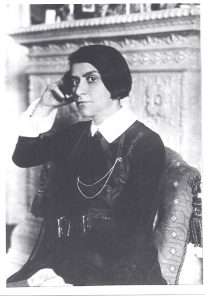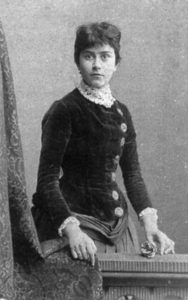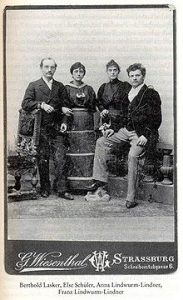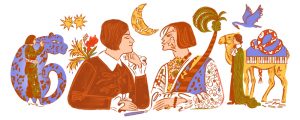Else Lasker-Schüler was a German-born poet and playwright who is famous as a poetic genius. Additionally, she is also known for living a bohemian lifestyle in Berlin, Germany, during the time when Nazis used to rule the country.
Matter of fact, Schuler was one of the women who were actively involved in the Expressionist movement. As a result, she had to flee from Nazi Germany and spent most of her life in Jerusalem.
Who is Else Lasker-Schüler?
Lasker was born on February 11, 1869, on Elberfeld, North German Confederation (today: Wuppertal, Germany). Likewise, she died on January 22, 1945, at the age of 75 on Jerusalem, Mandatory Palestine.

Source: nli.org
Furthermore, she was born as a daughter of Jeannette Schüler and Aaron Schüler. As per the reports, Schuler grew up along with her brother Paul who died very young when Else was just 13 years old.
Else Lasker-Schüler Was A Child Prodigy
Well, reading and writing these days may not be a new thing, but it certainly a matter of appreciation when someone did it in the 19th century at a very young age. Yes, Schuler could read and write from the early age of four, this why she is considered as a child prodigy.

Source: Wikipedia
Later, she attended Lyceum West An der Aue for further education but unfortunately, she had to drop out of the school. Soon after dropping out of school, she was fortunate to get private lessons at her home.
Else Lasker-Schüler’s Personal Life- Married Twice
For the first time in 1894, Else Lasker-Schüler married the physician, Jonathan Berthold Lasker. Moreover, Lasker was also was an occasional chess player and an elder brother a world chess champion, Emanuel Lasker. After the wedding, Lasker moved to Berlin with her husband where she got the opportunity to train as an artist.

Source: Wikipedia
Together with her husband, she became the parent of her first son, Paul who was born on August 24, 1899. During the same time, i.e the time of her son’s birth, her first poems were published. Later on 11 April 1903, the couple divorced. In 1927, she had to face the death of her son which sent her into the deep depression.
Eventually, after 7 months of divorce, she again re-married with Georg Lewin on November 30, 1903. Moreover, her second husband, Georg was an artist as well as the founder of the Expressionist magazine Der Sturm. Furthermore, Lewin was famous as a Herwarth Walden (pseudonym), invented by Schuler herself. However, her second relationship also didn’t work, separating from Walden in 1910 and divorcing him in 1912.
Why Was She Celebrated By The Google Doodle?
Else Lasker-Schüler is considered to be one of the greatest German-language lyrists. Additionally, her famous poem “My Blue Piano” was published in a Swiss newspaper on February 7, 1937.
As per the reference of the Doodle artwork by the piano keys on 7 February 2020, depicted on the back of the camel, was also the representations of life and work by Lasker-Schüler.

Source: Google
Back in 1933, as per the reports of Times of Israel, she was beaten by the Nazis in the street. This incident made her flee away from Germany. Furthermore, she was declared “Missing Person” as soon as she was forced to flee the country. Moreover, none of her friends and family didn’t know about her existence before she was discovered in Switzerland.
Life After Fleeing
Although Lasker-Schüler was awarded the Kleist Prize in 1932, she was physically harassed by the Nazis as a Jew. She emigrated to Switzerland, and in 1934 and unfortunately, she was unable to work there as well. Eventually, that led her to settle in Jerusalem in 1937.
Her German citizenship was abolished in 1938. Furthermore, the outbreak of World War II prevented Lasker-Schüler from coming back to Europe. She lived a poverty life and the children in the vicinity mocked her for her eccentric clothing and behavior.
On 10 January 1942, she formed a literary salon called “Kraal” at the French Cultural Center which was opened by the philosopher, Martin Buber. Interestingly, some promising Jewish writers and poets attended her literary programs, but Lasker-Schüler was finally prohibited from lecturing because it was in the German language.
Poetry-Work Timeline
- Published first full volume of poetry, Styx in 1902
- First prose work, Das Peter-Hille-Buch was published in 1906, after the death of her close friend, Hille
- Published the prose collection Die Nächte der Tino von Bagdad
- Published the play Die Wupper in 1909
For more updates, visit Wikye.









